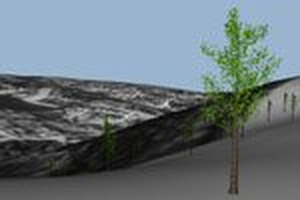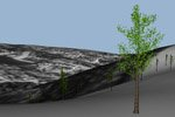Information
- Publication Type: Journal Paper with Conference Talk
- Workgroup(s)/Project(s):
- Date: September 2001
- Journal: Computer Graphics Forum
- Volume: 20
- Number: 3
- Note: Günther Enderle [Best Paper] Award, Best Student Paper Award. A. Chalmers and T.-M. Rhyne (eds.), Proceedings EUROGRAPHICS 2001
- Location: Manchester, UK
- Lecturer:
- ISSN: 0167-7055
- Event: EUROGRAPHICS 2001
- Conference date: 5. September 2001
– 7. September 2001
- Pages: 411 – 421
Abstract
We present an online occlusion culling system which computes visibility in parallel to the rendering pipeline. We show how to use point visibility algorithms to quickly calculate a tight potentially visible set (PVS) which is valid for several frames, by shrinking the occluders used in visibility calculations by an adequate amount. These visibility calculations can be performed on a visibility server, possibly a distinct computer communicating with the display host over a local network. The resulting system essentially combines the advantages of online visibility processing and region-based visibility calculations, allowing asynchronous processing of visibility and display operations. We analyze two different types of hardware-based point visibility algorithms and address the problem of bounded calculation time which is the basis for true real-time behavior. Our results show reliable, sustained 60 Hz performance in a walkthrough with an urban environment of nearly 2 million polygons, and a terrain flyover.
Additional Files and Images
Additional images and videos
Additional files
Weblinks
No further information available.
BibTeX
@article{Wonka-2001-Ins,
title = "Instant Visibility",
author = "Peter Wonka and Michael Wimmer and Fran\c{c}ois Sillion",
year = "2001",
abstract = "We present an online occlusion culling system which computes
visibility in parallel to the rendering pipeline. We show
how to use point visibility algorithms to quickly calculate
a tight potentially visible set (PVS) which is valid for
several frames, by shrinking the occluders used in
visibility calculations by an adequate amount. These
visibility calculations can be performed on a visibility
server, possibly a distinct computer communicating with the
display host over a local network. The resulting system
essentially combines the advantages of online visibility
processing and region-based visibility calculations,
allowing asynchronous processing of visibility and display
operations. We analyze two different types of hardware-based
point visibility algorithms and address the problem of
bounded calculation time which is the basis for true
real-time behavior. Our results show reliable, sustained 60
Hz performance in a walkthrough with an urban environment of
nearly 2 million polygons, and a terrain flyover.",
month = sep,
journal = "Computer Graphics Forum",
volume = "20",
number = "3",
note = "G\"{u}nther Enderle [Best Paper] Award, Best Student Paper
Award. A. Chalmers and T.-M. Rhyne (eds.), Proceedings
EUROGRAPHICS 2001",
issn = "0167-7055",
pages = "411--421",
URL = "https://www.cg.tuwien.ac.at/research/publications/2001/Wonka-2001-Ins/",
}


 Paper
Paper
